EBOOK
Audience Segmentation for eCommerce
Published: Mar 27, 2019
About this guide
While audience segmentation is an established marketing practice – most marketers will no doubt be segmenting their email lists and creating demographics-driven personas in their marketing activities – behavioral segmentation for website visitors is an evolution that has happened
Marketers can now understand much more about visitors to their eCommerce sites, opening exciting new avenues to better reach customers at the right point in the customer journey.
One of those avenues is the ability to segment your web traffic by behavior – meaning you don’t have to acquire their details in order to effectively market to them, but rather, you can automate this process while visitors are browsing your website.
This guide will help you get a handle on segmentation and how it can be used effectively in your onsite marketing strategy.
We’ll explain the difference between segmentation and personalization, provide examples of what kinds of visitor or customer segments you might market to, and show how segmentation has been used as a tool to personalize the customer journey in real-life examples.
Why audience segmentation?
E-commerce personalization depends on the data sources you can access and personalize against.
Behavioral segmentation in particular is an easy win for marketers: by recognizing patterns within your web traffic, you can cater to large groups among your users before drilling down to create a detailed personalization strategy within those audience segments.
This means you can cater to these large groups easily with small tweaks to your onsite marketing strategy. Combining behavioral segmentation with demographic, geographic, and psychographic segmentation is a powerful way to understand more about your audience, and from this deliver more personalized experiences on your website.
Audience segmentation vs. Personalization: What’s the difference?
Though both are driven by data, segmentation is about breaking customers into broadly identifiable groups; personalization is about individual behavior.
Return visitors who haven’t yet purchased are a customer segment, and after identifying them, marketers can set up messaging that will address them appropriately.
Personalization tactics can then reach those at the right point in their individual customer journey – for example, if they add an item to their shopping cart and then show intent to abandon their basket.
There are of course challenges with both: segmentation is by definition broad and can be generic; meanwhile, personalization requires a large amount of data in order for marketers to make the right play. However, both are highly effective tools that can increase conversion rates and average order value.
Segmentation can be a stepping stone to delivering personalization, especially when combined with real-time behavioral
8 ways to segment your audience
When
Given that we regularly analyze over 30 billion data points to benchmark customer journeys across eCommerce, we can shed some light on the audience segments you might want to consider focusing on.
Depending on your product, market, and marketing strategy, however, there could be dozens of other ways that work for you to form the foundation of a segmentation and personalization strategy.
1. New visitor segmentation
New visitors are an important segment to personalize for, but at this point in the customer journey, you don’t know too much about them – so understanding their behavior is key.
According to Yieldify data, new visitors make up a hefty majority of website traffic for both retail and travel, at around 55%. They also drive the most revenue: 40% and 44% for retail and travel sites respectively, so they need to be carefully nurtured, and led either to the checkout or to a micro-conversion, like signing up for an email newsletter.
It’s also likely you’re acquiring new visitors from paid sources such as PPC, so consider adding traffic source here, as visitors arriving from different channels might demonstrate different (but more on that later!).
Generally, for new visitors you want to:
- Ensure they know what you’re all about, as soon as possible.
- Keep them on the site as long as possible (so they can do the above).
- Learn more about them through their on-site behavior.
- Get an email address or other useful data before they go (if they’re really not ready to convert).
A simple welcome offer, such as the one below from Skyn
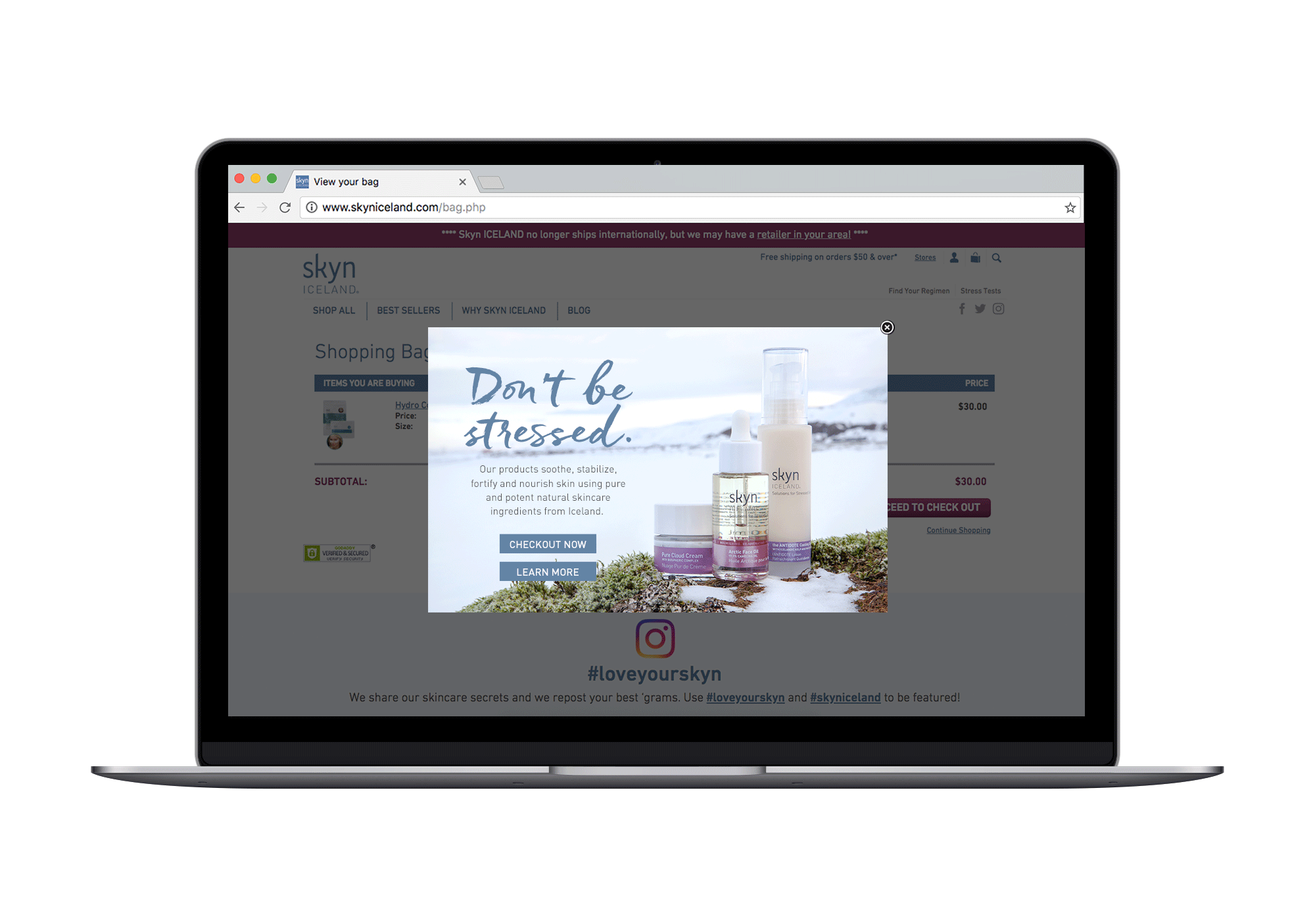
For example, A/B testing whether you need to actually offer a discount is a smart way to understand more about this segment (and preserve your margins!) In this case Skyn ICELAND found that highlighting its brand USPs was actually more successful for driving conversions with new visitors, as it helped educate those leaving the website about the brand and products.
2. Returning visitor segmentation
So, maybe you’ve done a great job with your new visitors, and lots of them are coming back to your
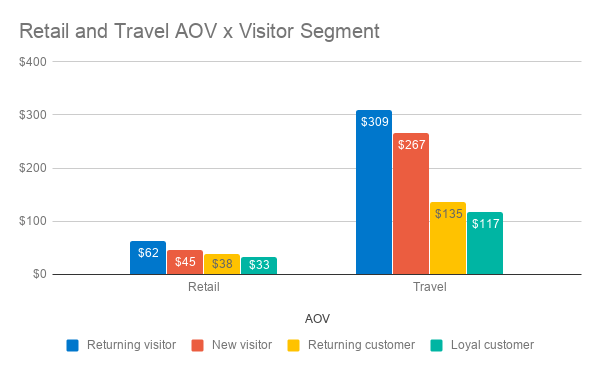
One key expectation that consumers today have is that you remember a little bit about them, 63% of consumers expect you remember their preferences and data across all channels, and this rises to 74% when we look at millennials. When it comes to behavioral segmentation this means treating them differently than the last time they visited, especially if they shared data with you!
It doesn’t have to be complicated, a simple ‘welcome back’ message, evolved from when they were a new visitor shows they’re not just another number – creating the same feeling you get when a shop assistant recognizes you. This is also another opportunity to secure their email address if you didn’t get it th
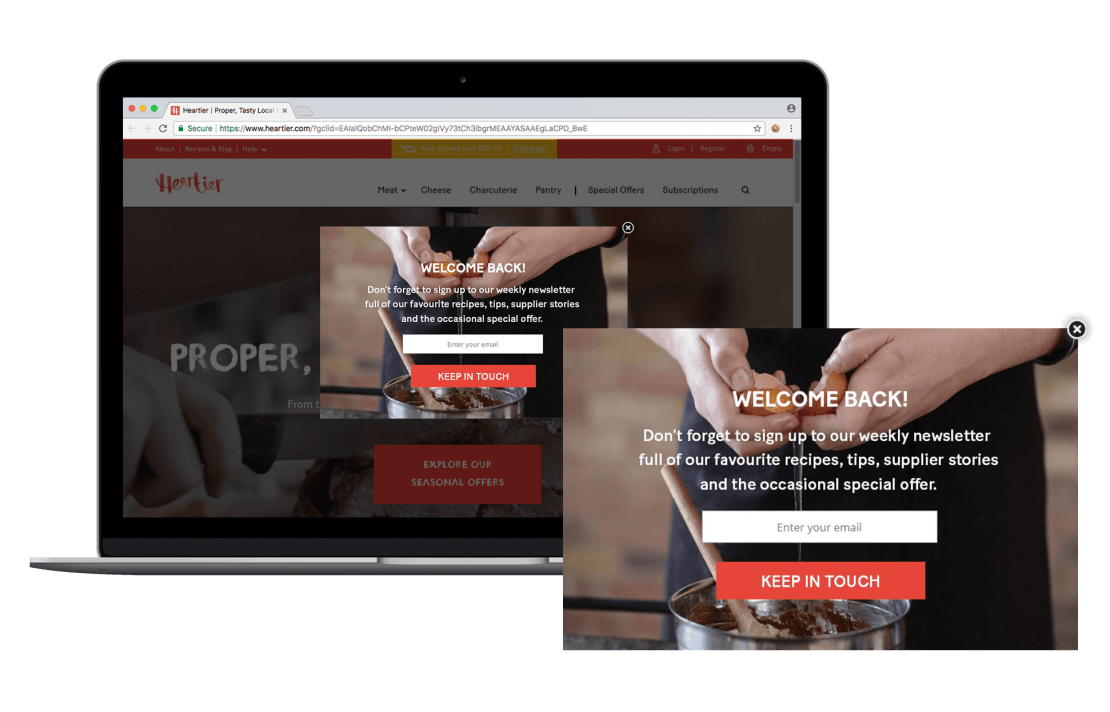
While this approach can work well for retailers, especially in
Thomas Cook Airlines and Condor designed a
The new campaign that incorporated opt-in was first trialed on Condor before being rolled out across Thomas Cook Airlines. It triggered an
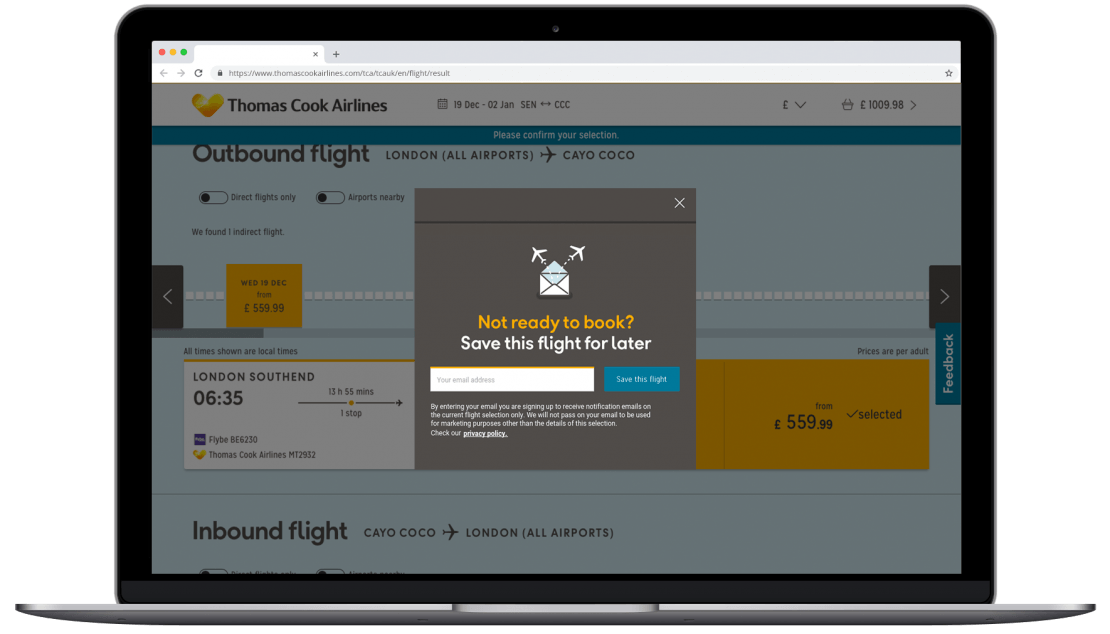
This campaign succeeded in engaging customers who were at high risk of being lost from the booking funnel, putting them on a journey towards conversion when they would otherwise have been lost. The GDPR-friendly approach also surfaced key learnings: whilst send volumes were smaller, the open rates, click-through rates, and conversion rates were significantly higher.
Considering the likelihood of a high order value from returning visitors, there’s an opportunity to personalize based on basket value.
For example, skincare brand Kiehl’s gave customers with order values within certain ranges incentives to increase the value of their basket: visitors showing intent to exit with a basket value below €60 were shown the exact amount they needed to spend to qualify for free shipping via Yieldify’s Dynamic Promotions feature. In addition, those with a cart valued between €75 and €89 were targeted with a corner notification offering a range of samples and sachets for orders over €90.
3. Returning customer segmentation
Returning customers – that is, those who have already made a purchase with you but aren’t yet loyal customers – are another segment that needs tailored attention as they are guided towards becoming a loyal customer. For both retail and travel, returning customers typically have a higher average order than loyal customers.
However, according to Bain & Company, “60-80% of customers who describe themselves as satisfied do not go back to do more business with the company that initially satisfied them.” This means that marketers have to work hard to woo these customers into returning again and again.
To guide
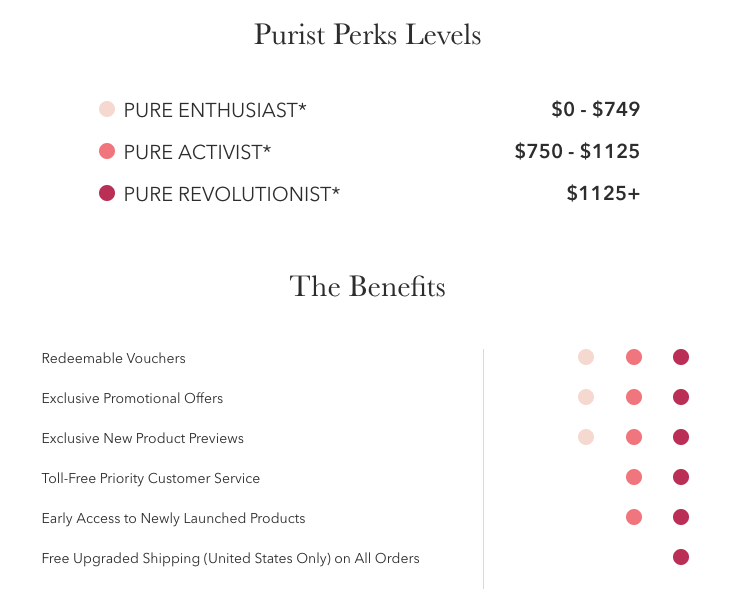
Gifts with Purchase can be an effective strategy for a variety of segments, but ensure the messaging is tailored to your returning customers. Haircare brand Ouidad works hard to give this group of customers a reason to come back, creating
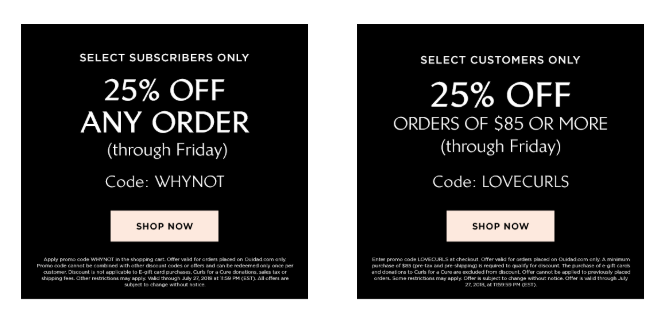
This is strategy is further supported by the brand’s loyalty program, with loyalty members demonstrating an average repeat purchase rate of 54.4 (vs. 29.8% for non-members).
4. Loyal customer se gmentation
Customers who have returned time and again, purchasing multiple times and/or who have a high lifetime value are a small but hugely important segment. Our stats show that they have a 31.3% (retail) or 33.8% (travel) chance of converting, the highest of any segment: a loyal retail customer has an 8.5x higher chance of converting than a new visitor.
“Loyal customers have the highest chance of converting verusus the segments we’ve discussed so far – 31.3% for retail and 33.8% for travel!”
Yieldify
With this segment, you can really start to focus on personalization, since you’ll have plenty of data from the customer’s previous purchases. For example, a fashion shopper’s previous purchase data could be used to recommend an extra item to increase order value.
This can be highly-personalized, ‘
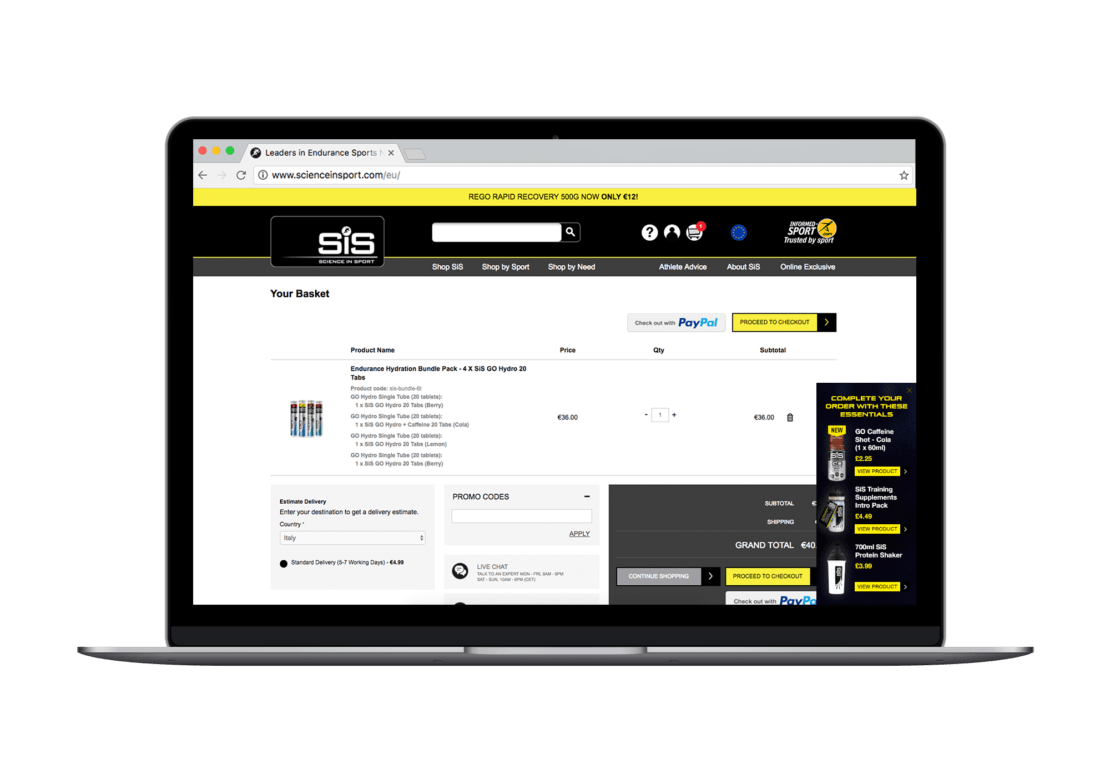
Another way to personalize for this segment is to offer highly tailored discounts based on preferences shown in the past, for example, if they have a preference for a particular brand or product, showing special promotions for those brands.
These are also the kinds of customers who may act as promoters on your behalf, so another way of extracting value from them is to suggest social sharing or to offer referral codes. For example, clothing retailer UNTUCKit offers a clear referral incentive for those who join their VIP program:
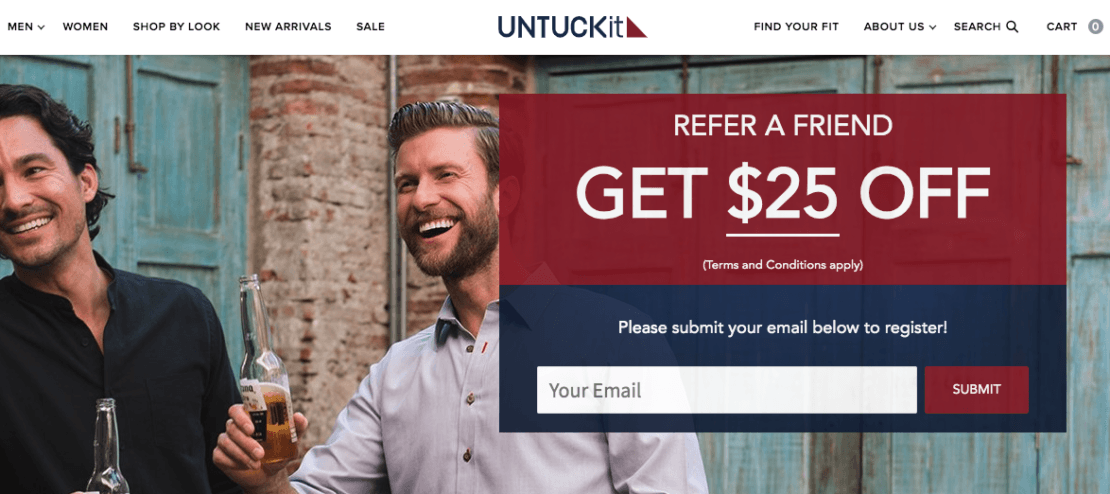
Finally, you might also want to ask those happy customers for a review! We’ve found that this works best when it is well-timed after a recent purchase. For example, using Yieldify’s historical targeting feature we were able to encourage returning customers who had made a purchase between a particular time frame to review their recent purchases for one of our beauty eCommerce clients:
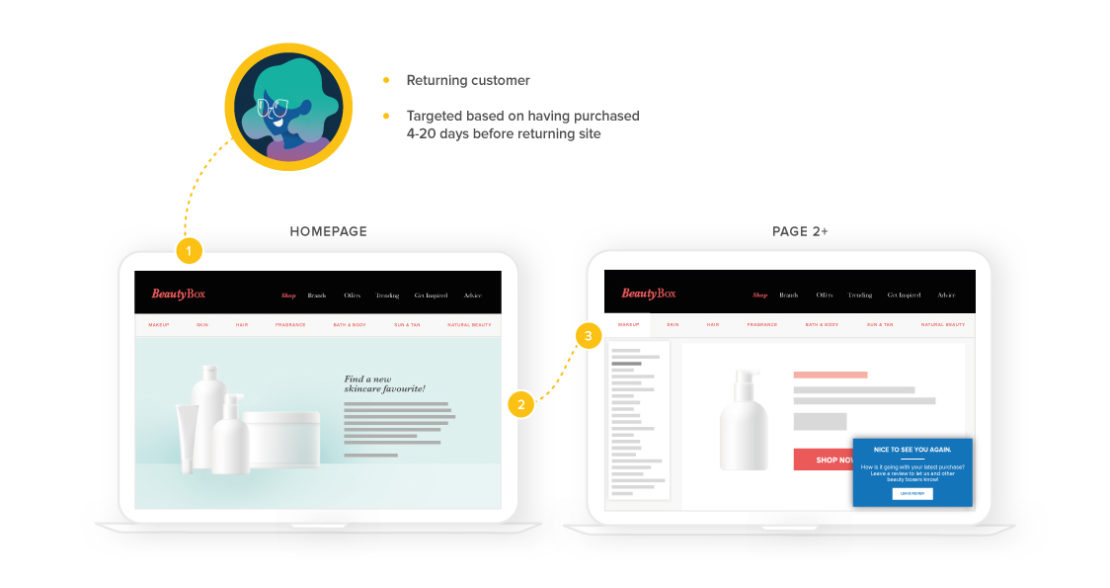
5. Time-based segmentation
Leading on from the above, time is of the essence! Time of day, day of the week and seasonal traffic are key segments that can be overlooked. Depending on the product and the target market, different times can be more or less profitable.
For example, soak.com, an online bathroom retailer, found that social proof personalization tactics weren’t working as effectively as expected on their visitors. The process of analyzing the customer journey and creating a customer journey map revealed that it did work well with those visitors browsing at lunchtime – i.e. people with more time to read, think, and consider this big purchase.
After zeroing in on this time of day with the campaign, they saw an 11.2% conversion rate uplift among those targeted.
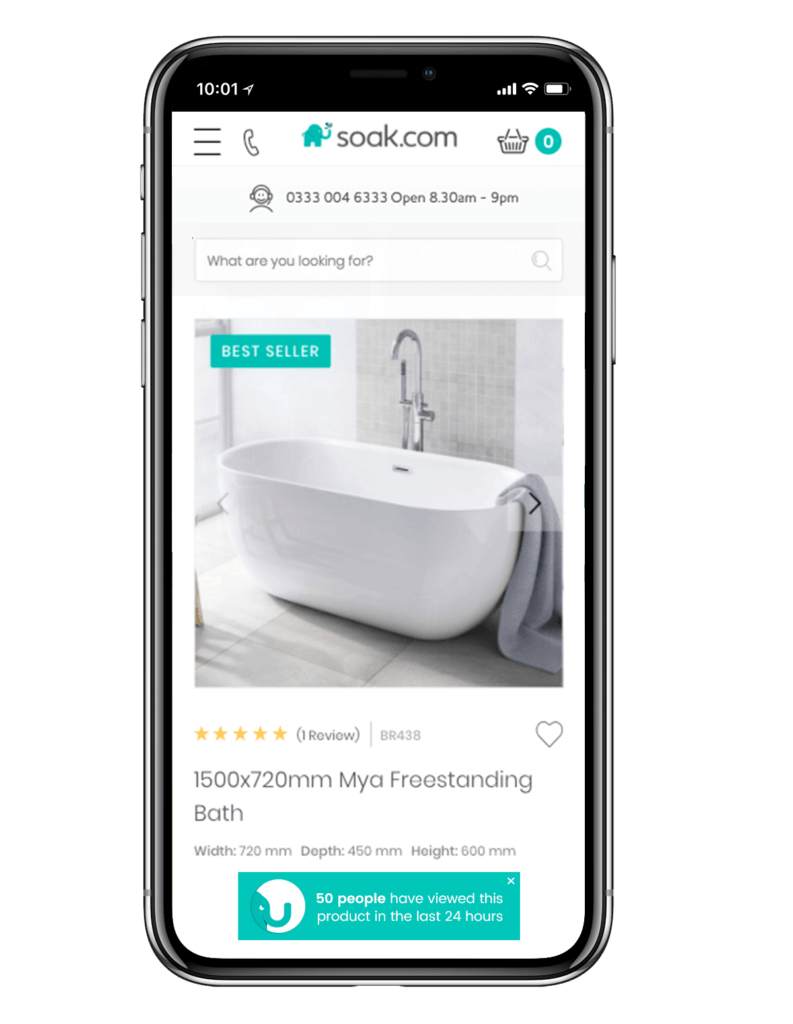
6. Location and Language segmentation
Depending on your product, breaking users down by their geographic location could be a highly effective tool to cater to customers’ needs. With this information, you can create highly targeted offers.
Geographic segmentation can also be used to serve specific messaging based on topical information like weather or local events. See for example the comparison between this topical vs generic display advertising:
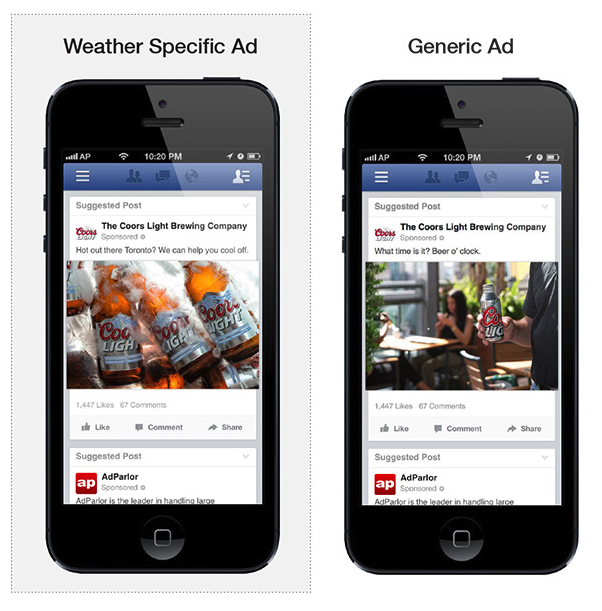
With this kind of targeting, you can highlight specific products (like fans during a heatwave or gifts and decorations for holidays celebrated in particular countries and regions).
Although global eCommerce brands will likely run different sites in the language of the region they operate in,
Another use case for language-based segments is when a significant number of visitors who are accessing a site in a particular country but who speak in a different language from the dominant one in that country.
Lancome found that many of their customers browsing the Canadian site were Chinese speakers, who are a huge driving force in global luxury e-commerce. This segment was then targeted with a lead gen message in their browser language:
7. Traffic source segmentation
Part of creating a seamless customer journey is in guiding browsers from the first point of contact (like an email, Instagram post, or Facebook advert) to your site and into the sales funnel. Traffic driven from specific sources might be attracted for particular reasons, so ensure that you’re serving them the content or offer they’ve clicked on.
Remind this audience segment of the initial reason they clicked. Subscription service SimplyCook’s targeted Facebook-driven traffic; by prompting them to sign up with a £1 trial offer, they were able to drive 7k leads that otherwise would have been lost.
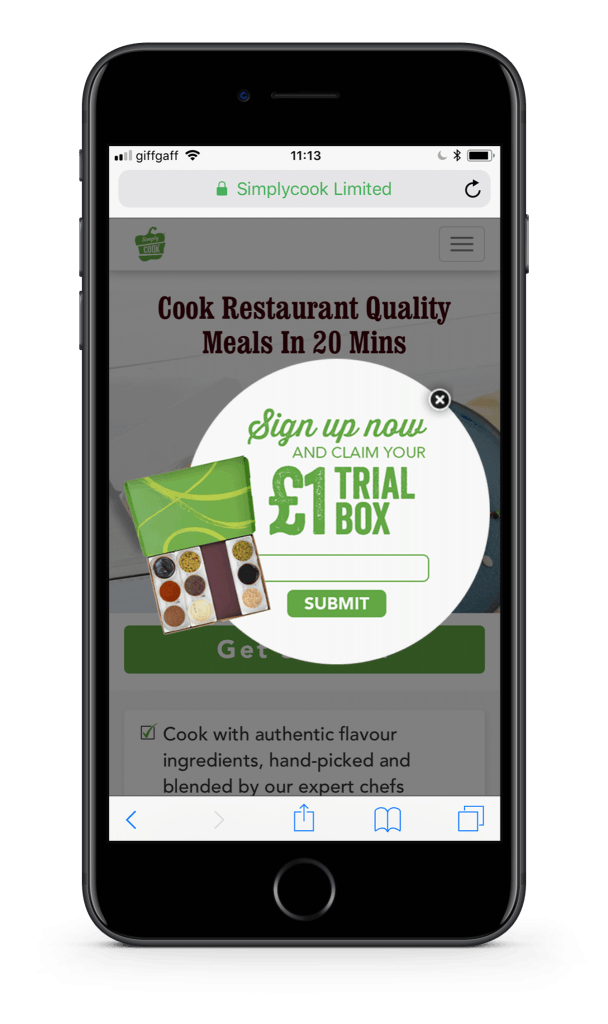
Building on the success of this campaign, the brand is now working with Yieldify to deliver personalized offers to other audience segments arriving on site from different traffic sources targeting, for example, those arriving from vegetarian or gluten-free content on Facebook.
8. Device segmentation
The proportion of purchases made via mobile is expected to reach 53.9% by 2021, and research shows that up to 65% of all online purchases involve multi-device journeys, so segmenting by
The path to conversion on mobile looks different from the desktop journey: it could mean a customer searching for store locations, making a call directly, using the mobile site while visiting in person (tying in with location segmentation), downloading an app, or engaging in browsing that starts on mobile but transfers to a desktop for the purchase. These kinds of journeys should be reflected in your customer journey map, and based on data from your users.
To target abandoning mobile visitors, menswear retailer M.J.Bale highlighted its click-and-collect service, and in-store returns, perfect for mobile users on the go.
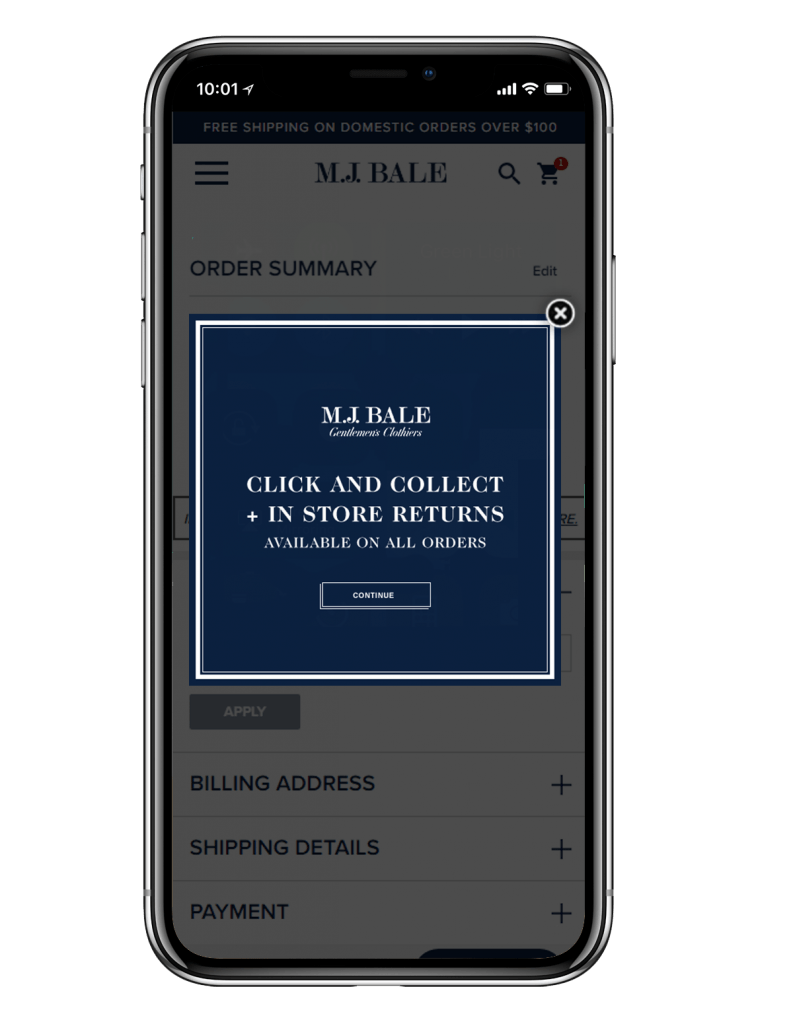
Conclusion
Identifying and catering to your audience segments is one of the first steps to a strong personalization strategy, and these eight examples are just a simple starting point!
By catering to the circumstances and expectations of your traffic, you can begin to optimize ROI with messaging that reflects the stage of customer journey the visitor is at, whether they’re a brand new visitor or a loyal customer.
Your segments will constantly evolve as you gather more data on your visitors, and may interact with each other: For example,
Ultimately, the greater the granularity available in the data, the more you’ll be able to personalize for these segments as they emerge.